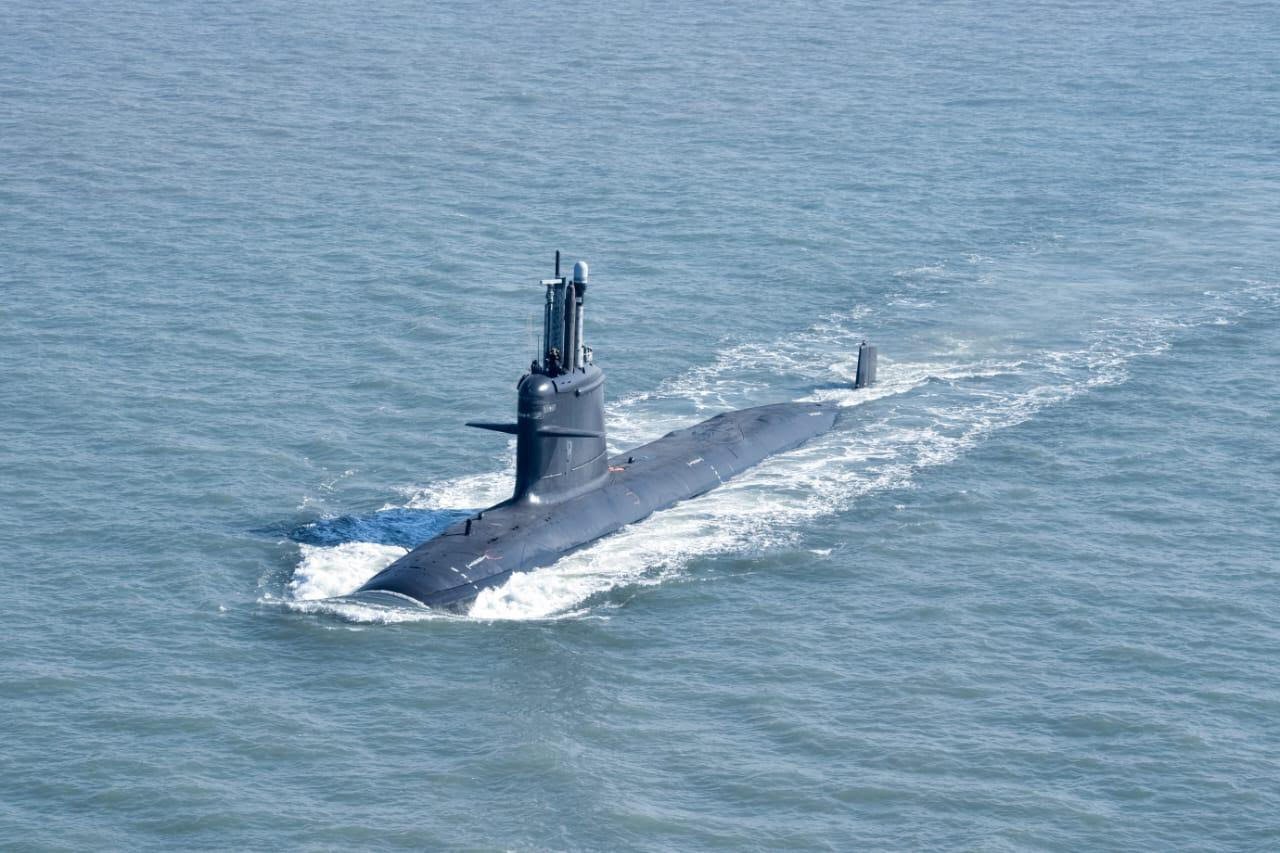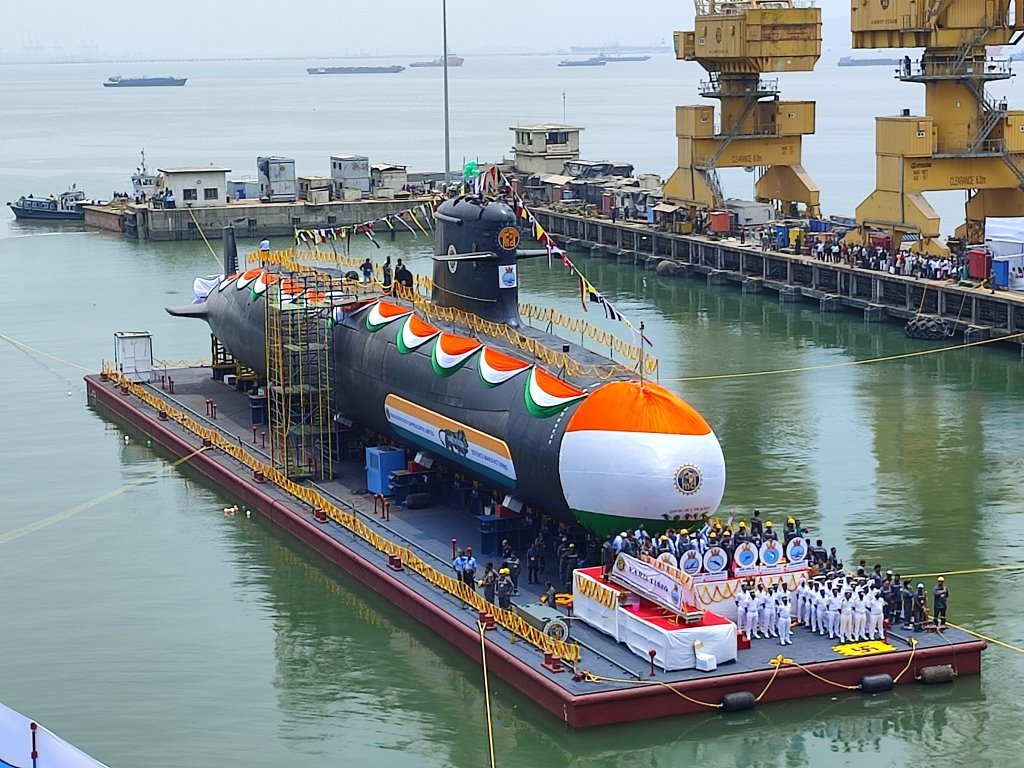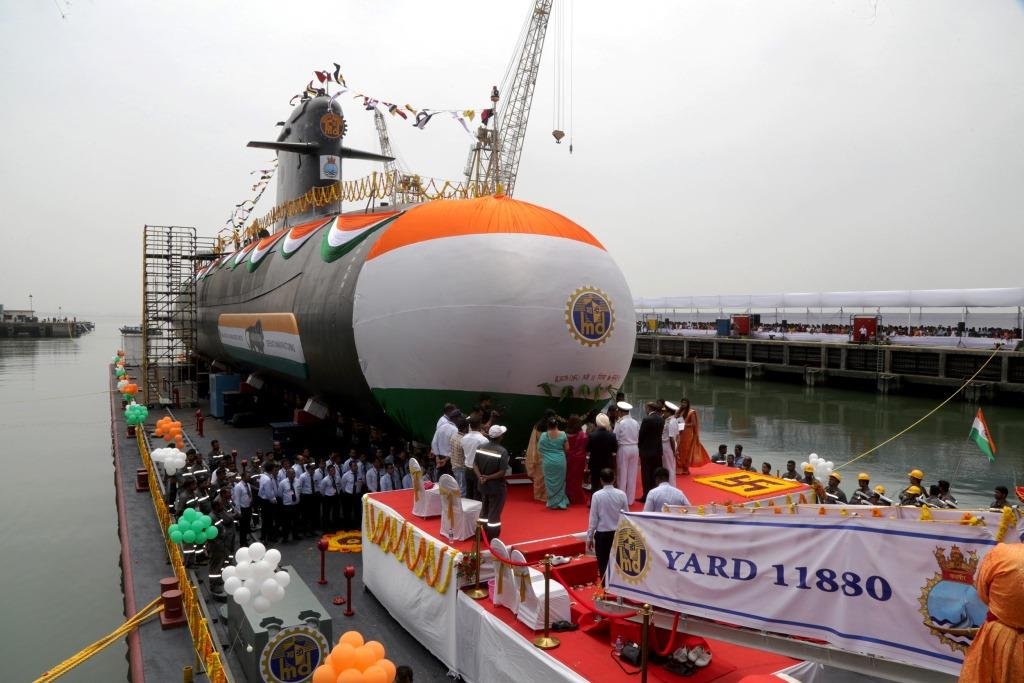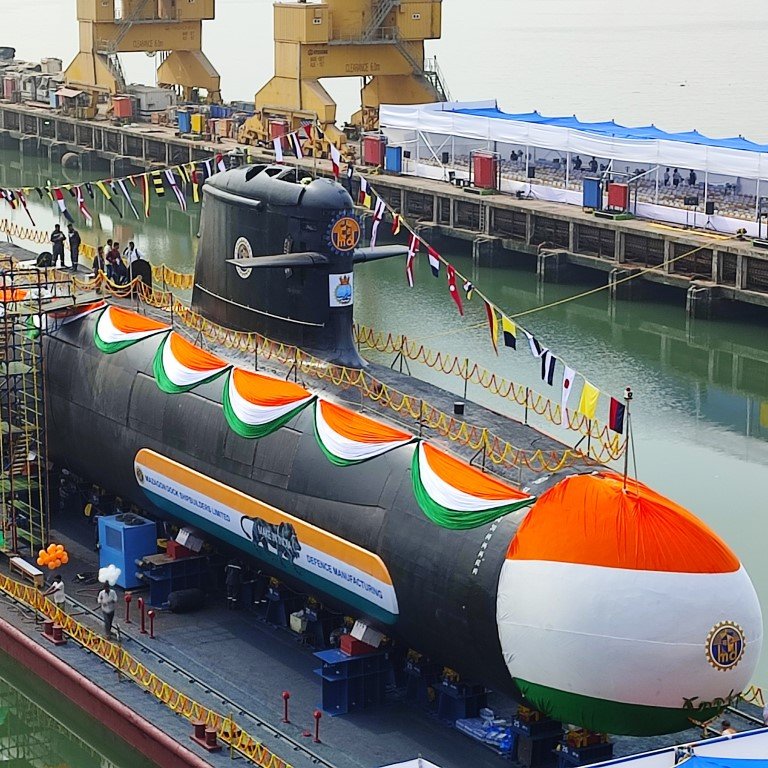Introduction of INS Vagir Submarine
The INS Vagir Submarine is a diesel-electric attack submarine of the Indian Navy. It is the fifth submarine of Kalvari class. These submarines are being built by Mazagon Dock Limited in Mumbai. It is part of Project 75, a program to build advanced stealth submarines for the Indian Navy. The INS Vagir submarine was commissioned into the Indian Navy on November 21, 2020, and has since become a valuable asset for the country’s maritime defense.
This submarine is powered by a diesel-electric propulsion system. The submarine can operate for extended periods of time without the need for refueling, making it well-suited for long-range patrols and surveillance missions.

What are The Features of “The INS Vagir Submarine”?
The Features of the INS Vagir are as follows:
Specification
- Length: 67.5 meters
- Beam: 6.2 meters
- Draft: 5.8 meters
- Displacement: 1,565 tonnes (surfaced) / 1,775 tonnes (submerged)
- Speed: 37 Km (surfaced) / 27 Km (submerged)
- Endurance: 45 days
- Crew: 35
The submarine is powered by a diesel-electric propulsion system. It was extremely quiet and fuel-efficient. The submarine can operate for extended periods of time without the need for refueling. Its well-suited for long-range patrols and surveillance missions. The use of the AIP (Air Independent Propulsion) system allows the submarine to remain underwater for a longer duration.
The INS Vagir is equipped with advanced stealth features and land attack missiles, making it a formidable asset for the Indian Navy. Some of the key stealth features include anechoic tiles on the hull that absorb and scatter sound waves, reducing the submarine’s acoustic signature, and minimizing its magnetic and electromagnetic signatures.

Performance
The INS Vagir Submarinehe is equipped with advanced stealth features that make it difficult to detect enemy ships and aircraft. The submarine’s hull is coated with anechoic tiles, which absorb and scatter sound waves, reducing its acoustic signature. Additionally, the submarine has been designed to minimize its magnetic and electromagnetic signatures, making it even more difficult to detect. These features allow the submarine to operate in a stealthy manner, making it an ideal platform for surveillance and intelligence-gathering missions.
INS Vagir Submarine is also equipped with an advanced combat management system, which allows it to operate in a network-centric warfare environment. This system allows the submarine to share information with other naval assets, such as surface ships and aircraft, and to coordinate its actions with them. This enhances the submarine’s effectiveness in both offensive and defensive roles.
Armaments
The INS Vagir Submarine is armed with a wide range of weapons, including torpedoes, mines, and land attack missiles. This Submarine is capable to conduct a variety of missions and engage a wide range of targets.
- Torpedoes: The INS Vagir is equipped with heavyweight torpedoes, which are designed to engage and sink enemy ships and submarines. These torpedoes are launched from torpedo tubes, which are located on the bow and stern of the submarine.
- Mines: The INS Vagir is also equipped with naval mines, which can be laid to block enemy shipping lanes and deny an area of the ocean to an enemy. These mines can be laid from the submarine’s torpedo tubes, or they can be laid by divers.
- Land Attack Cruise Missiles (LACMs): The INS Vagir is also equipped with LACMs, which allow it to attack targets on land from the safety of the ocean. These missiles are launched from the submarine’s torpedo tubes and are guided to their targets by an onboard navigation system.
- Anti-ship missiles (AShMs): The submarine is also equipped with Anti-ship missiles, which are used to attack and destroy enemy ships from a distance. These missiles are launched from the submarine’s torpedo tubes.

The INS Vagir Submarine is also equipped with advanced electronic support measures (ESM) and electronic countermeasures (ECM) systems to detect and evade enemy sensors and weapons. The submarine is also equipped with advanced decoys, which are used to deceive enemy sonars and missiles. These systems make the INS Vagir difficult to detect and track by enemy ships and aircraft, allowing it to operate in a stealthy manner and to carry out its missions with a high degree of success.
What are The Class Types of “Submarines”?
There are several different classes of submarines, each with its own unique characteristics and features. Some common classes include:
- Attack submarines (SSN): These submarines are primarily designed for hunting and attacking other ships and submarines. They are typically armed with torpedoes and cruise missiles.
- Cruise missile submarines (SSGN): These submarines are similar to attack submarines but are armed with a larger number of cruise missiles, which they can launch while submerged.
- Ballistic missile submarines (SSBN): These submarines are designed to carry and launch intercontinental ballistic missiles (ICBMs) and are often referred to as “boomers.”
- Research and survey submarines: These submarines are designed for research and survey missions. These are typically smaller and more maneuverable than other classes of submarines.
- Cruise-ship submarines: These are smaller and used for tourist and passenger transportation.
- Midget submarines: These are small submarines, typically operated by a crew of one or two, and are used for reconnaissance, sabotage, and special operations.
- Submersibles: These are smaller than submarines, operated by a crew of one or two, and are typically used for research and survey missions.
What are The Class Types of “The Indian Submarines”?
India operates several different classes of submarines in its Navy. Some of the main classes include:
- Sindhughosh class (Kilo class): These are diesel-electric attack submarines that were acquired from the Soviet Union and Russia. They are armed with torpedoes and mines and are primarily used for anti-shipping and anti-submarine warfare.
- Shishumar class (Type 209): These are diesel-electric attack submarines that were built in Germany. They are armed with torpedoes and mines and are primarily used for anti-shipping and anti-submarine warfare.
- Kalvari class (Scorpene class): These are diesel-electric attack submarines that were built in France and India under license. They are armed with torpedoes and mines and are primarily used for anti-shipping and anti-submarine warfare.
- Khanderi class (Scorpene class): These are diesel-electric attack submarines that were built in India under license. They are armed with torpedoes and mines and are primarily used for anti-shipping and anti-submarine warfare.
- Vikrant class: This is an Indigenous Aircraft Carrier class that will be equipped with MiG-29K fighter jets, helicopters, and a variety of offensive and defensive weapons.
- Arihant class: This is a class of nuclear-powered ballistic missile submarines that are being built by India. The lead ship of the class, INS Arihant, was commissioned in 2016 and is armed with K-15 Sagarika and K-4 nuclear-tipped missiles.
Do you know about USS Virginia Class Submarine?






